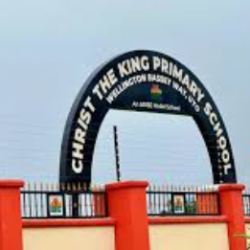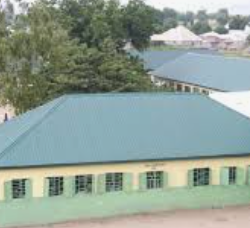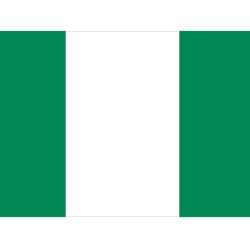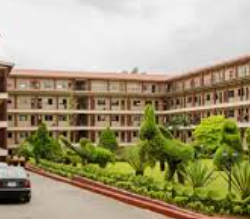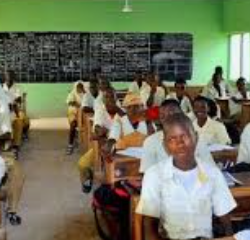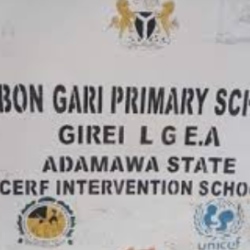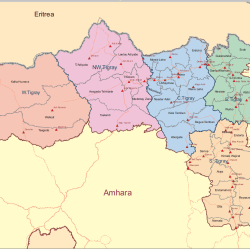Approximate distance between the communities to the LGA and State capital
| Community | Distance from LGA Headquarter | Distance from State Headquarters |
| Barwo Wunde | 8.14KM | 91.65KM |
| Nafada | 0. KM | 97.88KM |
| Jigawa | 33.56KM | 126.36KM |
| Barwo Nasarawa | 10.44KM | 92.11KM |
| Birin Bolawa | 25.03KM | 70.52KM |
| Birin Fulani | 24.87KM | 71.48KM |
Nafada local government area is in Gombe state, North-east geopolitical zone of Nigeria and has its headquarters in the town of Nafada.
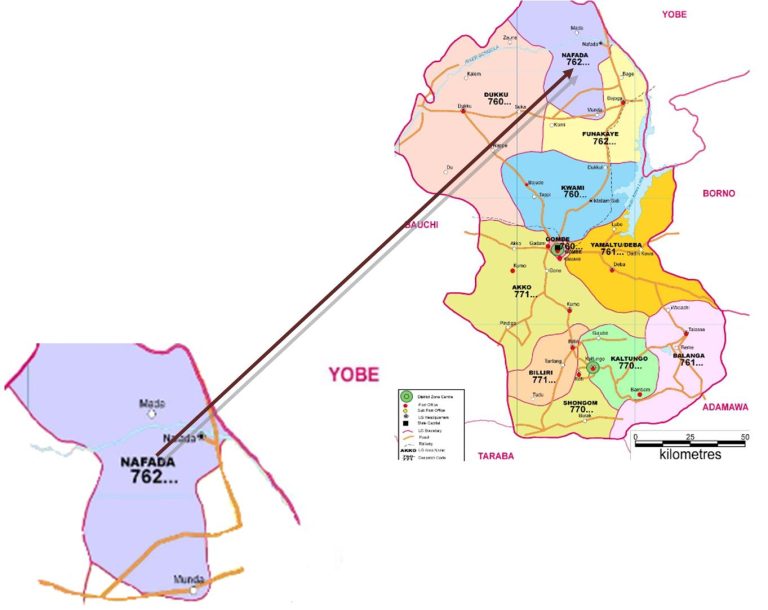
A number of towns and villages make up Nafada LGA and these include Nafada, Biri Fulani, Kuruga, Barwo, Jigawa, and Biri Bolawa. Nafada LGA is part of the Gombe Emirate and the estimated population of Nafada LGA is put at 247,899 inhabitants with the area mostly populated by the members of the Fulani tribe. The Hausa and Fufulde languages are commonly spoken in the LGA.
GEOGRAPHY OF NAFADA
Nafada local government area covers a total area of 1,586 square kilometres and has an average temperature of 33 degrees centigrade. The Gongola River flows throught the LGA and the area has an average humidity level of 20 percent.
ECONOMY OF NAFADA
Nafada LGA has a viable trade sector and hosts a number of markets such as the Donfa market where wide variety of commodities are bought and sold. A number of mineral resources are also found in Nafada LGA and these include Gypsum and Limestone. Other important economic activities in Nafada LGA include farming, pottery, craftsmanship, and the rearing and sales of domestic animals.
LIST OF WARDS IN NAFADA LOCAL GOVERNMENT AREA
There are 10 wards in Nafada Local Government Area.
- Barwo / Nasarawo
- Barwo Winde
- Birin Bolewa
- Birin Fulani East
- Birin Fulani West
- Gudukku
- Jigawa
- Nafada Central
- Nafada East
- Nafada West
LIST OF POLLING UNITS
There are 108 polling units in Nafada Local Government Area.
- Abba Isari, Kofar Mai Isari
- Ardo Abba, Kofar Dafa Shama
- Ardo Hari, Kofar Alh. Tsoho
- Ardo Siddi, Kofar J. Sidi
- Barwo S/ Gari, Kofar Majidadai
- Barwo S/ Gari, Kofar Sarki
- Buraru, Kofar J. Buraru
- Daba, Kofar J. Jungudo
- Daba, Kofar M. Gidado
- Dadinkowa, Kofar Jauro Jeiyo
- Dallati, Central Pri. Sch.
- Dallati, Viewing Centre
- Dange, Kofar J. Abba
- Dange, Kofar J. Dura
- Dawaki, Kofar J. Dawaki
- Dendele, Kofar Sarki
- Denlele, Kofar Denlele
- Feshingo, Kofar Sarki
- Gadari Chesderi, Kofar J. Gadari
- Gadi, Kofar J. Gadi
- Gadum, Kofar J. Saidu
- Gani Yana, Kofar Sarki
- Garin Zangi, Kofar J. Mai Dabara
- Gashinge, Kofar J. Adamu
- Gudukku Yamma, Kofar Gudukku Yamma
- Gulmari, Kofar Sarki
- Gurajawa, Kofar Mal. Abdu
- Guriya, Kofar M. Gidado
- Jangama, Kofar J. Angama
- Jauro Alh., Kofar J. Alh.
- Jolle, Kofar Usman Jolle
- Jolle, Kofar Madaki
- Kaki Yawa, Kofar Sarki
- Kanji, Kofar Galadima
- Kiyayo, Kofar Sarki
- Kuka, Kofar J. Musa
- Kukawari, Kofar Sarki
- Kunkururi, Kofar J. Gimba
- Lafiyawo, Kofar Jauro Shehu
- Lange, Kofar J. Lange
- Lariski, Kofar J. Idrisa
- Lumbo Dashi, Kofar J. Lumbo / Dashi
- Lumputi, Kofar Jauro Mamuda
- Mada, Kofar J. Barde
- Mada, Kofar Sarki
- Mada, Mande Pri. Sch.
- Madaki Lamu / Wagule, Kofar J. Ahmadu
- Madakiri, Kofar J. Garga
- Mai Dukuli, Kofar Sarki
- Makidibu, Kofar Makidibu
- Makidibu, Kofar Musa Dada
- Maruwa, Kofar J. Abduwa
- Munda, Kofar J. Munda
- Njalkam, Kofar J./idrisa
- Papa, K/j/ Papa
- Papa, Kofar Jauro Musa
- Sabon Sara, Sabon Sara
- Shaganawa I, Kofar J. Usman
- Shaganawa Ii, Kofar J. Usman
- Shole Goi-goi, Kofar J. Manu
- Shole Jada, Kofar J. Alh. Ali
- Shole Mango, Primary School
- Sodingo, Primary School
- Sorodo, Kofarn J. Gani
- Suko, Kofar J. Yahai
- Takai, Kofar J. Boka
- Tashan Kargo, Kofar J. Ali
- Ubandoma, Central Pri. Sch.
- Ung. Barde, Primary School
- Ung. Bauchi, Kofar Abba Jani
- Ung. Bauchi, Kofar Bauchi
- Ung. Chiroma, Kofar Sarki
- Ung. Dawaki, Kofar Chiroma
- Ung. Galadima, Kofar Galadima
- Ung. Galadima, Kofar Galadima
- Ung. Galadima, Kofar Galadima
- Ung. Galadima, Kofar Ubandoma
- Ung. Maagaji Ii, Danda Bola
- Ung. Maagaji I, Danda Bola
- Ung. Madaki / Primary School
- Ung. Madaki, Disrrict Head Office
- Ung. Madaki, Kofar Madaki
- Ung. Madaki, Kofar Madaki
- Ung. Madaki, Kofar Madaki
- Ung. Madaki, Pri. School
- Ung. Madaki, Veterinary Office
- Ung. Ubandoma, Kofar Sarki
- Ung. Ubandoma, Kofar Ubandoma
- Ung. Ubandoma, Kofar Ubandoma
- Ung. Yerima, Kofar S. Fawa
- Ung. Yerima, Kofar Sarki
- Ung. Yerima, Kofar Sarki
- Wakkaltu, Kofar Sarki
- Wali, Kofar J. Abdulkadir
- Walowal, Kofar J. Ahmadu
- Wuro Abba, Kofar Alh. Manu
- Wuro Bege, Kofar J. Moh’d
- Wuro Boggga, K/j/ Wuro Bogga
- Wuro Bundu, Kofar J. Ashau
- Wuro Jabbi, Kofar Jauro
- Wuro Jabbi, Kofar Sarki
- Wuro Juli, Kofar J. Musa
- Wuro, Kofar J/ Maji
- Yabulas. Kofar Jauro Ali
- Yelwa, Kofar J. Usman
- Zadawa, Kofar Jauro Ahmadu
- Zadawa, Kofar Sarki
- Zange Sule, Kofar J. Ali
Gombe
Gombe is one of the 36 states of Nigeria. It is located in the north eastern part of the country.
The state was created out of Bauchi state on 1st October 1996 by Sani Abacha’s administration.


Its creation was a fulfilment of the aspiration of the people who for long, had passionately craved for a state of their own out of the then Bauchi state.







Gombe State has eleven Local Government Areas (LGA) namely, Akko, Balanga, Billiri, Dukku, Funakaye, Gombe, Kaltungo, Kwami, Nafada, Shongom, and Yamaltu Deba.
The following are administrative maps of Gombe State showing the local government areas

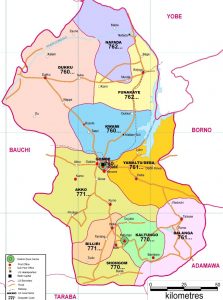
Historically, Gombe state is a fusion of two distinct groups of people, comprising the people of Gombe North and the ethnic grouping of Gombe South.
Gombe is located on latitude 9”30’ and 12”30’N, Longitude 8”5’and 11”45’E.
It has borders with Borno, Yobe, Adamawa, Taraba, and Bauchi states.
The State climate is generally warm, with temperatures not exceeding 300c during the months of March-May considered to be the hottest months. The following table gives other profile of the jewel state.
The following Map indicates in red the position of Gombe in relation to the thirty six (36) states of the federation.
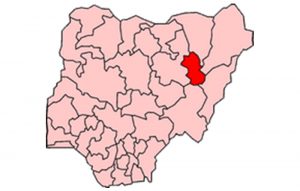
The Emirate government, which had its Head quarters in Gombe Abba, was formed to effectively control what constitutes a larger part of the Gombe State, until the advent of the British in the early 20th century.
Under the British, the state was administered through the mechanism of two administrative units, i.e. Gombe Native Authority and Tangale Waja Native Authorities. The two Authorities constituted Gombe Division during the Colonial era. However, with independence in 1960 and the subsequent military administration, many changes occurred which led to the emergence of local government authorities. Thus, between 1976 and the present, the then two authorities had metamorphosed into the present 11 local governments.
Capital: Gombe
Land Area: The State occupies a total land area of about 20,265sqkm.
Climate :Warm, exceeding 40″c during the hottest month (March – May)
Topography: Mainly mountainous, undulating and Hilly to the South-East and flat open plains in the Central, North, North-East, West and North-West.
Location: Latitude 9”30’ and 12”30’N, Longitude 8”5’and 11”45’E. The state lies in the centre of North east Geopolitical Zone of Nigeria. It shares common boundaries with Adamawa and Taraba State to the South, Bauchi State to the West, Borno State to the East and Yobe State to the North.

Power: The State is served by the PHCN National grid through the North-East PHCN substation located in Gombe State capital
Roads: Five(5) Federal trunk “A” roads connect the State Capital with all parts of the Country. Twonship roads have been constructed in the State capital and all the major towns.
Airport: The State has an International Airport which is also surrounded by four (4) International Airport, located in Kano, Jos, Yola and Maiduguri.
Major Towns: Gombe the capital, Bajoga, Billiri, Kaltungo, Kumo, Dukku and Deba.
Ethnic CompositionMulti-ethnic, mainly made up of Fulani, Tangale, Waja, Bolawa, Tera,Jukun, Jara, Pero, Tula, Cham, Lunguda, Dadiya, Kamo, Awak, Kanuri, Hausa, Yoruba and Igbo.
Language Spoken: English is the official language, but as much as Hausa remain the commercial language amongst the people of the state, Fulfulde, Tangale, Tera, Waja, and Kanuri are commonly spoken.
Vegetation: Gombe is generally a Guinea Savannah grassland with concentration of wood lands in the South East and South West.
Rainfall: Annual Average of 850mm.


